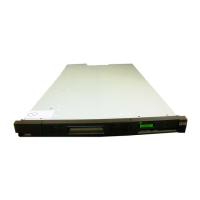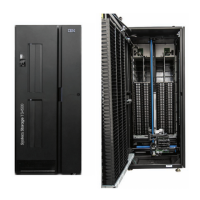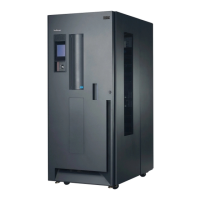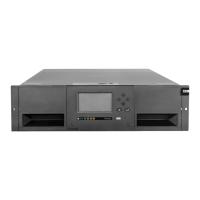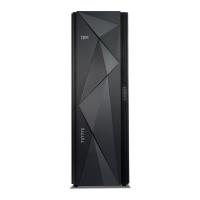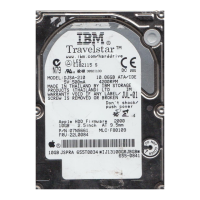remote location for disaster recovery. It protects data consistency across all
volumes that you have defined for mirroring. The volumes can reside on
several different storage units. The z/OS Global Mirror function can mirror
the volumes over several thousand kilometers from the source site to the
target recovery site. DS8000 storage complexes support z/OS Global Mirror
only on zSeries hosts.
With z/OS Global Mirror, you can suspend or resume service during an
outage. You do not have to end your current data-copy session. You can
suspend the session, then restart it. Only data that changed during the
outage needs to be resynchronized between the copies.
The z/OS Global Mirror function is an optional function. To use it, you must
purchase the remote mirror for z/OS 2244 function authorization model,
which is 2244 Model RMZ.
z/OS Metro/Global Mirror (3-site z/OS Global Mirror and Metro Mirror)
This mirroring capability uses z/OS Global Mirror to mirror primary site data
to a location that is a long distance away and also uses Metro Mirror to
mirror primary site data to a location within the metropolitan area. This
enables a z/OS 3-site high availability and disaster recovery solution for
even greater protection from unplanned outages.
The z/OS Metro/Global Mirror function is an optional function. To use it, you
must purchase both of the following functions:
v Remote mirror for z/OS (2244 Model RMZ)
v Remote mirror and copy function (2244 Model RMC) for both the primary
and secondary storage units
FlashCopy
The IBM TotalStorage FlashCopy feature provides a point-in-time copy capability for
logical volumes. FlashCopy creates a physical point-in-time copy of the data, with
minimal interruption to applications, and makes it possible to access immediately
both the source and target copies.
The primary objective of FlashCopy is to create a copy of a source volume on the
target volume. This copy is called a point-in-time copy. When you initiate a
FlashCopy operation, a FlashCopy relationship is created between the source
volume and target volume. A FlashCopy relationship is a ″mapping″ of a FlashCopy
source volume and a FlashCopy target volume. This mapping allows a point-in-time
copy of the source volume to be copied to the target volume. The FlashCopy
relationship exists between the volume pair from the time that you initiate a
FlashCopy operation until the DS8000 copies all data from the source volume to the
target volume or until you delete the FlashCopy relationship, if it is a persistent
FlashCopy.
The point-in-time copy that is created by FlashCopy is typically used when you
need a copy of the production data to be produced with minimal application
downtime. It can be used for online back up, testing of new applications, or for
creating a database for data-mining purposes. The copy looks exactly like the
original source volume and is an instantly available, binary copy.
FlashCopy supports the following copy options:
Data Set FlashCopy
Data Set FlashCopy allows a FlashCopy of a data set in a zSeries
environment.
18 DS8000 User’s Guide
